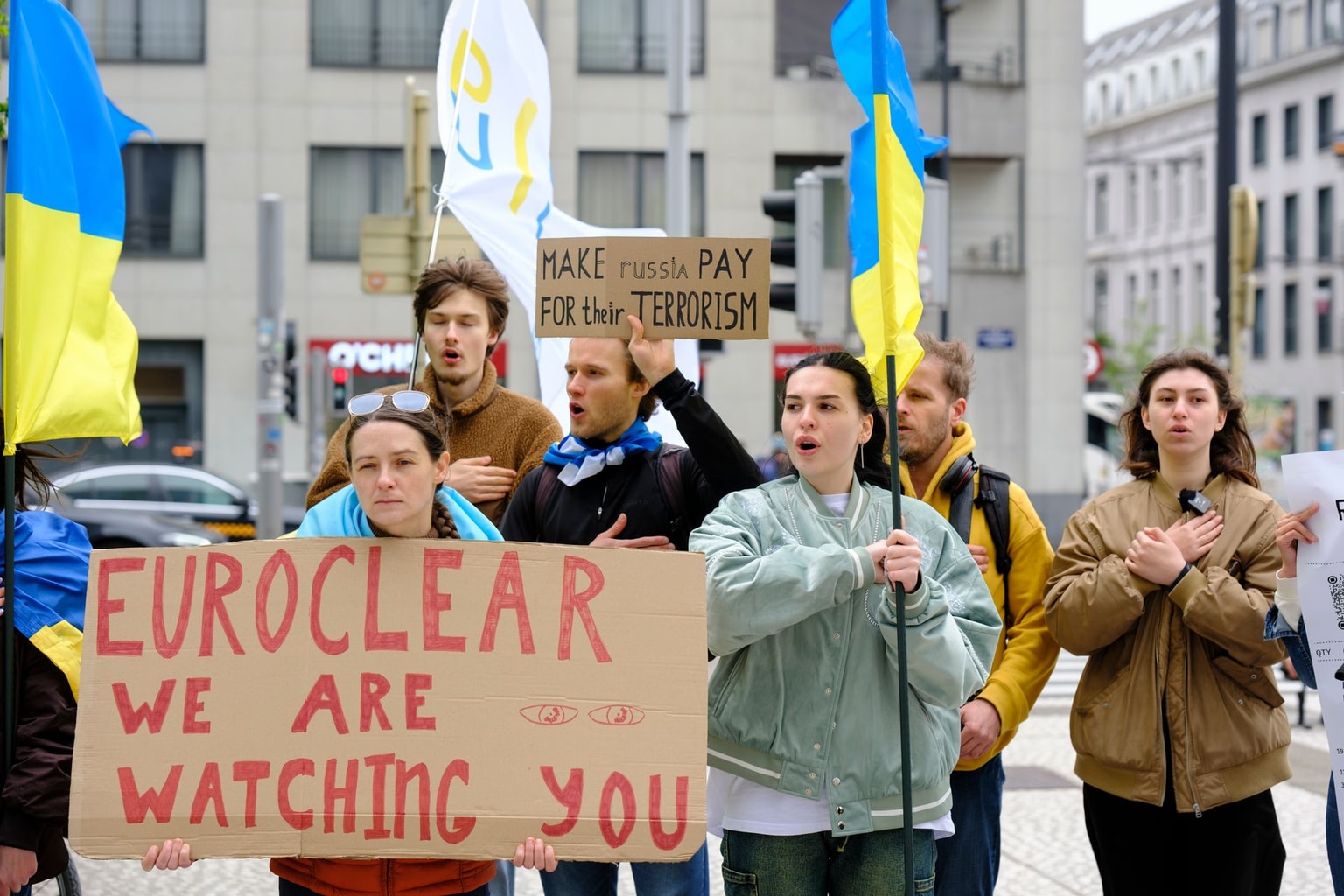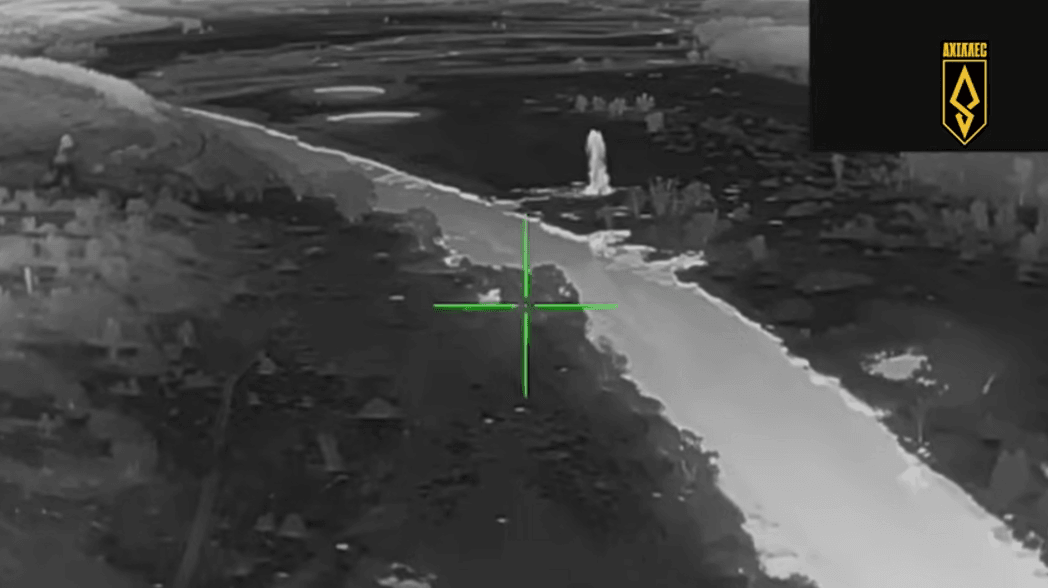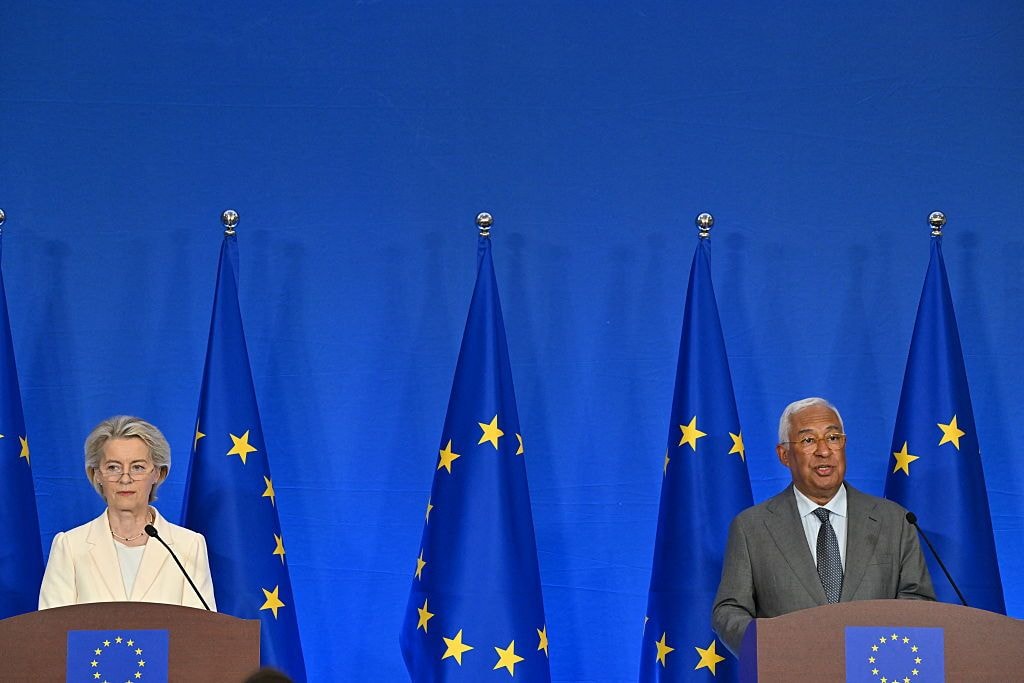
Europe cannot fill void left by US in Ukraine’s defense
Europe's struggle to replace US military aid to Ukraine highlights deep political and industrial challenges that leave the continent vulnerable to Russian aggression.
Then-U.S. President Donald Trump arrives to pose for a family photo with participants of the G7 summit during the Summit of the Heads of State and of Government of the G7 in Taormina, Spain, on May 27, 2017. (Jonathan Ernst/POOL/AFP via Getty Images)
Since the election of Donald Trump as president of the United States, the question on everyone's mind is whether Europe, including the U.K., can replace the military assistance the U.S. is giving Ukraine. The short answer is no. The reasons for this are a mix of politics and capabilities.
The U.S. and the European Union currently provide similar amounts of military aid to Ukraine — 43% each, according to the latest figures. In the EU, Germany is the largest donor (12%), and the United Kingdom provides the second-most generous assistance from outside the EU (9%).
These figures speak for themselves: For the EU to replace the U.S., it would need to double its military aid to Ukraine. The current political situation in Europe, along with the real military capabilities of individual European countries, means Europe will not be able to step up in the short term. This is bad for Ukraine and bad news for Europe, which is slowly waking up to the reality that without the U.S., it would struggle to mount any meaningful defense against an outside aggressor.
How did we get here?
After the end of the Cold War, most European countries reduced their military production and/or shifted their military industrial models, focusing on export markets and just-in-time production. The Kiel Institute for the World Economy, a German research center, provides the example of Germany, which has recently increased military spending. But at current rates, it would take decades for the country to replenish its weapons stockpiles to the level they were 20 years ago.
According to the European Council on Foreign Relations, “Since the start of Russia’s war on Ukraine, Europe’s defense industry has increased its ammunition production capacity by 50% and aims to produce more than 2 million shells per year by the end of 2025 — double its capacity in February 2022,” which is a positive development.
The European Commission has proposed shifting the EU to a war economy, but this is still in the discussion phase. Ukraine will need more than proposals debated in Brussels to meet the shortfall left by a potential American withdrawal.
To complicate matters, defense is one of the least integrated industrial sectors in the EU, meaning it cannot benefit from the economies of scale of the U.S. military-industrial complex. Since Brexit, the U.K. will no longer be able to participate in EU-wide defense industry projects, adding to the challenges. Bilateral agreements between the U.K. and France and between the U.K. and Germany, however, will attempt to facilitate military procurement and development between the U.K. and two major European defense heavyweights.

French President Emmanuel Macron has been one of the most vocal Western European leaders calling for an independent European defense and for wholehearted support for Ukraine. But actual progress in ramping up industrial production in France has been slow. France remains one of the smallest contributors of military aid to Ukraine relative to its GDP, although the French have delivered most of what they have promised.
The lack of capacity is not just a European problem but a NATO-wide issue. In February 2023, NATO Secretary General Jens Stoltenberg warned that Ukraine’s rate of ammunition expenditure was many times higher than the allies’ current production rate, putting NATO defense industries under strain. Even before Trump’s victory, a U.S. disengagement from Europe seemed likely due to strains on its own defense sector and the defense establishment’s strategic pivot toward Asia and the Middle East.
Keir Giles of Chatham House, whose book “Who Will Defend Europe” was launched earlier this month, argues that Europe always knew what Trump’s arrival would mean for Ukraine. A precursor was seen earlier this year when Congress blocked the new military aid package to Ukraine. The result on the battlefield was clear in terms of loss of men and territory. Giles’ warning is dire: “If Washington resigns, there is nothing to stand in the way of Russia,” be it for Ukraine or for Europe as a whole.
As Ukraine approaches the third anniversary of all-out war with Russia, pressure is mounting on its leaders to negotiate. Because of years of “criminal dereliction of duty” by European governments, as Giles calls it, Europe now finds itself in a position where it cannot defend a country that has sacrificed tens, maybe hundreds, of thousands of lives to defend not only its own territory but Europe as a whole.
At the time of writing, Germany, Europe’s largest military donor to Ukraine, has plunged into political chaos with the collapse of the Olaf Scholz-led coalition. France’s Macron, a staunch defender of Ukraine despite his initial impulses to seek dialogue with Russian President Vladimir Putin, has lost much of his freedom of action since the June parliamentary elections, where he lost his majority.
Elsewhere in Europe, political parties on the far right and far left, with pro-Russian sympathies, are rising. Hungarian Prime Minister Viktor Orban, a friend of Putin and Trump, is a major obstacle to EU-wide military assistance to Ukraine.
The countries on Europe’s new frontline — the Baltic states of Estonia, Latvia, and Lithuania, as well as Poland — understand the Russian threat. They have been generous toward Ukraine in absolute terms while ramping up their own defense spending.
While the EU and its member states have made strides in increasing military aid and production, the stark reality remains that Europe cannot yet fill the void left by the U.S., either in terms of its own defense or that of Ukraine. As long as perceived national interests continue to diverge and political stability wavers, particularly in key countries like Germany and France, Europe will struggle to forge a unified and effective response to the war raging on its continent.
But the time for Europe to confront its obligations is now, as the stakes have never been higher. This should start by emulating Poland and the Nordic countries, understanding that defending Ukraine is not an act of charity, but the number one priority for self-defense.
Editor’s Note: The opinions expressed in the op-ed section are those of the authors and do not necessarily reflect the views of the Kyiv Independent.









